So you just finished playing Mansions of Madness and you want to run a Lovecraft game now. Congratulations! You've decided to play the game that is most likely to make your friends hate you that isn't Monopoly!
Horror games have a couple of really significant differences from the average tabletop campaign. Firstly I would recommend reading my first article about how to empower and challenge your players.
Go on. I'll wait.
Okay, that was quick. Now, forget everything about the "empowerment" part. When you run a horror campaign your party are not the brave and stalwart heroes that they may be in the Fantasy game. They aren't even the mischievous-at-best, murderers-at-worst pirates in the High Seas campaign. PCs in horror games are the unluckiest bastards in the story because they don't even have the good fortune of being brutally eviscerated in the opening scene. They have to slog through the entire sanity draining, soul crushing, and nature-of-existence questioning narrative you're cooking up for them. It's going to be hard for the players and you have to trust them to be able to take it. I was lucky enough to pick three of my mentally sound friends and lead them on a full semester's worth of Lovecraftian time-looped Thing-esque body horror campaign. Only one of their characters escaped alive. Then they thanked me for it.
How do you scare people?
The nature of fear is a tricky thing, unique to every individual. It comes dredged up from our subconscious and our repressed memories, that lizard hind brain shrieking mindlessly into the dark. Tapping into that in a safe environment can be really fun, as evidenced by the countless horror flicks that have been produced and gobbled up by the thrill seeking masses. The true core of fear, as I see it, can be traced back to the fear of the unknown. It ties into the fear of whatever it is that is lurking outside the pitiful circle of firelight, those unknown -things- creeping in the dark, they are stronger and faster than us as we sit shivering around the feeble light that won't chase away that lurking shadow of death.
So, you have to go through your friend's diaries and read about the things that scared them the most, so you can really write their innermost fears into a tabletop game. Right? ...Well, maybe, but that's kind of rude, so I propose the Lovecraft technique! Let's learn to scare some people.
The Lovecraft Technique
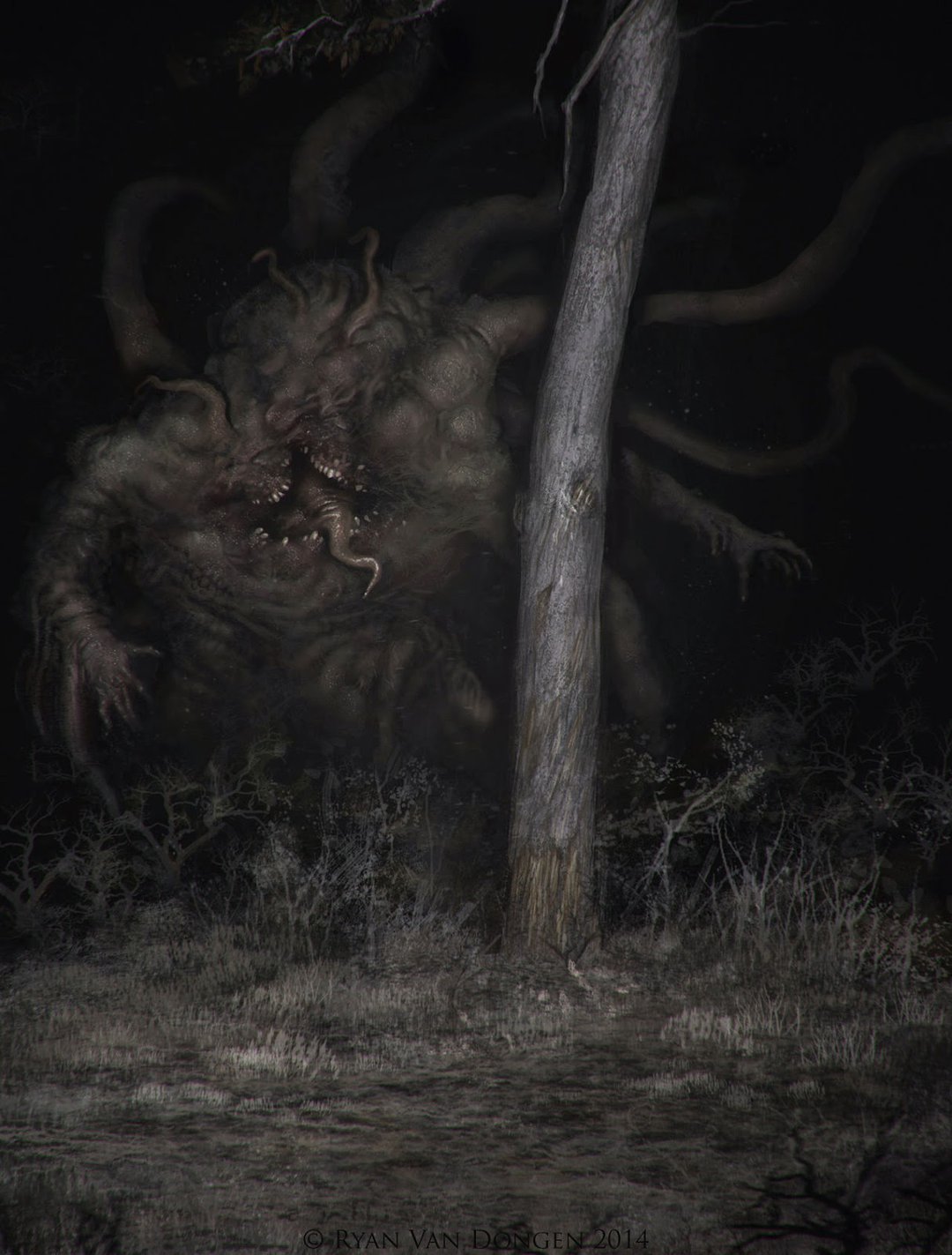
I have read a lot of Lovecraft stories. One of the things he does to make his horror so universal is the concept of only ever hinting at the monsters that threaten us. He goes on and on about the unnameable indescribable horrors, and in doing so, he allows each reader to envision the thing that disturbs them the most. Once you begin describing a monster and assigning rules to it then the players or readers or viewers can pigeonhole it into a compartment and deal with it mentally. The more you let the audience see the monster, the less scary it becomes. If you tell someone that there is a monster behind the door, they will be afraid. If you throw open the door and it's a ten foot tall bug, they might scream and jump, but in the end they will say "wow, that was scary, but if it had been a twenty foot tall bug I would really have lost it." If you thrown open the door and a twenty foot tall bug is there they might scream and jump, but in the end they will say "wow, that was scary, but if it had been a thirty foot tall bug I would really have lost it." and so on.
Yes, it's going to eat you. But it could have been scarier.
The truest way to scare someone is to let them scare themselves. You can do this by telling them that there is a monster behind the door, then opening it just so slightly and a chitinous pincer comes out. Then you slam the door close and say it's too terrifying, and each individual reader will fabricate the most monstrous thing they can think of (2). There's nothing that you can write that is scarier than what the reader can imagine. So don't waste time trying. You never want the audience to figure out the entire scope of the threat that stalks them.
Preparing the game
The real narrative of most horror stories is subtly different from the narratives you might be familiar with from traditional role-playing games. There aren't any grandstanding heroes or dragons to be slain. They won't be saving the world. Victory in a horror setting is not losing your mind and being devoured by the Worm that Walks. The stories are not broad in scope; they are very, very personal and intimate. You'll follow the tale of the beleaguered protagonists as they are hunted, hurt, and brutalized by the shadowy and unknown antagonist. The focus is on the player characters and their attempts to stay alive, sane, and whole. You should keep this in mind as you craft your narrative, select your threats and antagonists, and set the scene. You want the players to feel in real life the same fear that the characters would experience. It's supposed to be unsettling, but also cathartic and healthy and fun. If you remember to keep the fear at the table.
A lot of adventure games are written to be open narratives with no set ending. I have always been a fan of knowing when to wrap up the horror story. If it drags on too long, then you end up having to escalate the threats more and more; you may lose sight of the fear-inducing forest for the gory awful trees. Maybe if the PCs escape the quarantined building into the morning sunlight, you can just say "Good job, you made it". There's no reason to make a sequel if the narrative is over. You aren't a big Hollywood studio out to make a buck by pumping out the same uninspired drivel every summer. You're here to tell a damn good story and have a little bit of sadistic fun.
Setting and Threat
The reason that stories like Cloverfield (2008) and The Mist (2007) [Oh my gosh go watch The Mist if you haven't seen it!] were so horrific is that the "threat" of the story isn't just a dude with a machete or something corporeal that can be fought; no, the stress comes from the fact that the threats are more like forces of nature than enemies. There's no way to combat the global threat, nothing to be done except pray and hope to endure. Bleakness and despair are all that these apocalypse-scale terrors bring in their wake. Cosmic horror was really fleshed out by Lovecraft, where his message was that humanity as a whole is nothing more than a mosquito (a gnat, a single germ, a speck of dust) to some of the power players in the universe. It's on a level so far removed from human consciousness that anything anyone could possibly do will ultimately be irrelevant. That sense of futility is the root of cosmic horror.
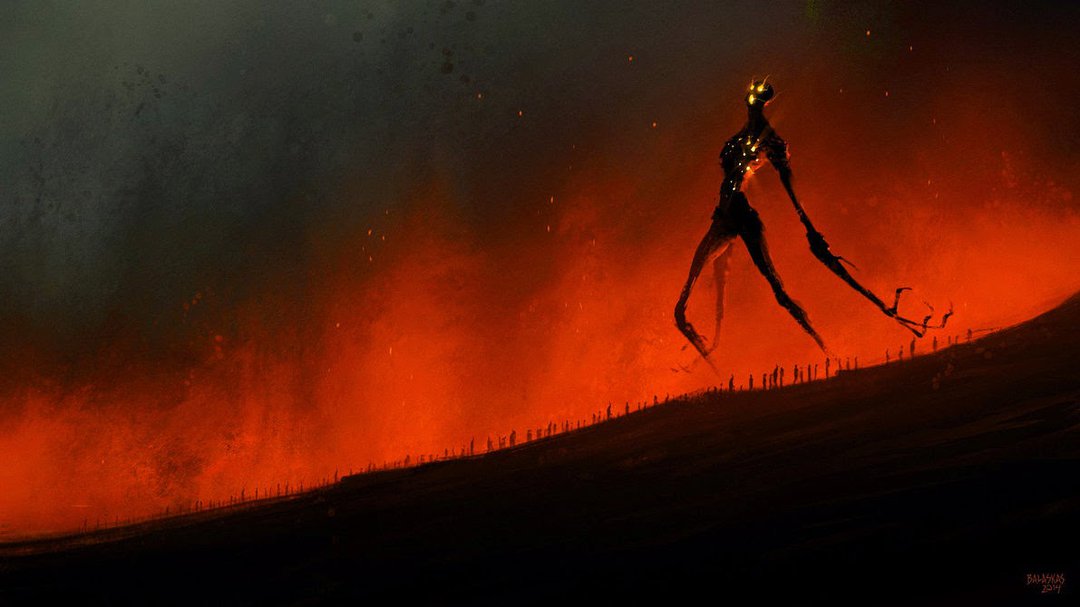
You think that thing gives even the slightest shit about your unemployment problems?There's bigger things to be scared of.
If you don't want to take a tumble down that solipsistic rabbit-hole you could always try the local horror option. That's your more traditional Friday the Thirteenth (1980) and Nightmare on Elm Street (1984) story. There's some implacable killer stalking the darkness, ready to reach out and snuff the candle of the screaming youths for some inscrutable reason. Like the cosmic horror there is no pleading, no mercy to be taken from the blades of the Hunter. This is your REC (2007), your Psycho (1960), your Saw (2004). The thing to keep in mind with the local horror is that the players may begin trying to conceptualize their assailant, come up with the rules governing its behavior, then try to turn that around and leverage some kind of victory over that. That's why you'll often see the supernatural opponents, the ghosts and zombies and vampires that just won't stop.
Trust and Safety
So you've got your concept. It might seem cheesy, like The Crawling Eye, but it's a start. Next you need to consider who you are playing with. Horror is not a genre that everyone can enjoy so keep that in mind. If you think Andy would be bored or become upset then it's okay to say that you don't think he'd like the game. Maybe you know that Shelley has a life sized mannequin of Chucky in her room. (Actually, maybe don't invite Shelley.) The point is to consider your victims carefully. This is a game and it's supposed to be a safe place. If you feel like the game is getting too intense or someone is becoming uncomfortable then it is your responsibility as a game master and a friend to cut it short.
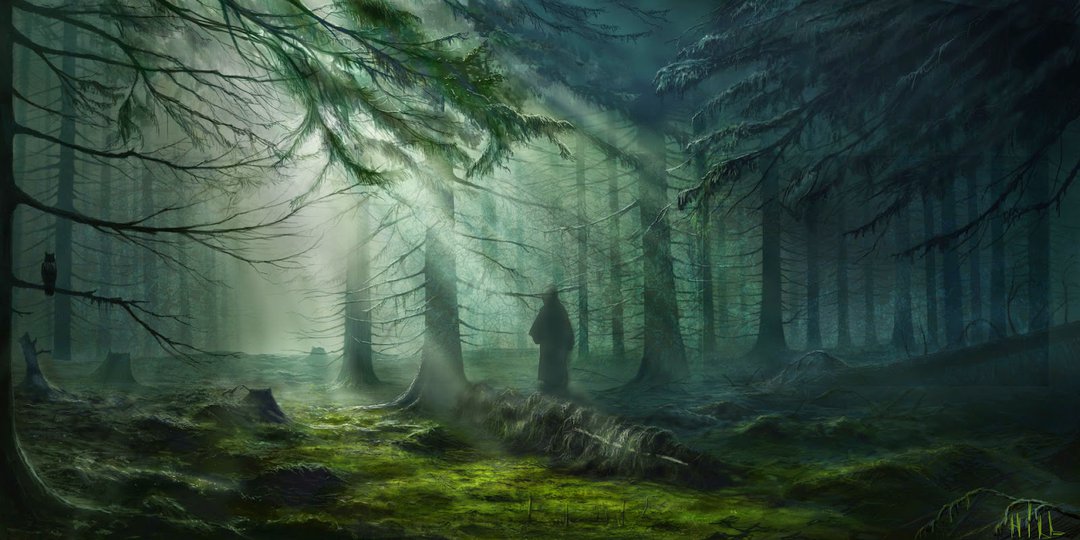
"Maybe he's lost?"
The Presentation
You have two options when it comes to setting up the game. You can choose to inform the players that they are going to be in a horror game. You can also choose to lie to them. If they think they are going into a Film Noir style murder mystery narrative, then they will feel even more afraid and threatened when cultists start sending living nightmare golems after them in the suburbs of Chicago. My most successful horror game was based on this. I lied to my players and converted a Call of Cthulhu rule set into the White Wolf system. It was a 1920's murder mystery in a small town in northern Maine. I was able to effectively leverage a couple of good psychological horror elements and combine it with the threat of horrifying death and magical mutative body horror to keep my players on edge and uncomfortable without ever pushing it over the line into gore porn or over the top theatrics. It was very important to me that players not realize that they were trapped in a Lovecraft story until they finally saw the reanimation of one of their NPC friends. That revelation was held off until they were frustrated and scared because all of their logical crime solving was coming up short in the face of eldritch magick. The entire tone of the game shifted at that point and it was all downhill from there.
Horror tools:
Isolation
In the modern day, the concept of isolation is a little foreign. If you're in the position to be spending your free time playing games and not hunting for dinner or walking five miles to get a bucket of water, then you probably have a cell phone. You can contact anyone at any time; you can go on the internet and feel a sense of connection others via Facebook or Twitter. Isolation is scary because it makes us realize that we are small individuals in a big, scary, hostile world. If you scream for help and no one hears you, then that sense of creeping fatalism and despair you get is the horror you want to evoke in your players. You can put the players under a lot of pressure by letting them know that the only thing separating them from oblivion is their own willingness to survive, and how that alone may not be enough.
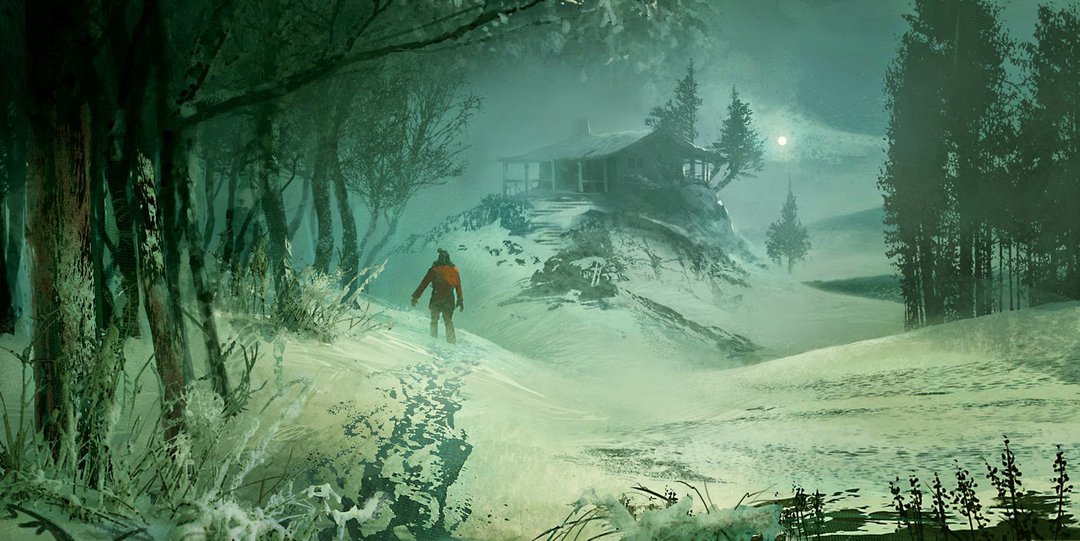
"Oh, no, don't go in there, come on!"
Pressure causes tension and that's what makes your favorite horror movies good. Alfred Hitchcock has this to say about suspense in movies:
“There is a distinct difference between "suspense" and "surprise," and yet many pictures continually confuse the two. I'll explain what I mean.
"We are now having a very innocent little chat. Let's suppose that there is a bomb underneath this table between us. Nothing happens, and then all of a sudden, "Boom!" There is an explosion. The public is surprised, but prior to this surprise, it has seen an absolutely ordinary scene, of no special consequence. Now, let us take a suspense situation. The bomb is underneath the table and the public knows it, probably because they have seen the anarchist place it there. The public is aware the bomb is going to explode at one o'clock and there is a clock in the decor. The public can see that it is a quarter to one. In these conditions, the same innocuous conversation becomes fascinating because the public is participating in the scene. The audience is longing to warn the characters on the screen: "You shouldn't be talking about such trivial matters. There is a bomb beneath you and it is about to explode!"
In the first case we have given the public fifteen seconds of surprise at the moment of the explosion. In the second we have provided them with fifteen minutes of suspense. The conclusion is that whenever possible the public must be informed. Except when the surprise is a twist, that is, when the unexpected ending is, in itself, the highlight of the story.”
Suspense and tension go hand in hand when creating horrific atmospheres. My favorite examples of movies that use suspense to create horror are the classics: The Thing (1982), Alien (1979), and Hellraiser (1987) (3). they may be cheesy to some modern viewers but the technique is on point. There are countless others, modern and archaic, but the core theme that makes them all grip-your-seat tense is that they allow the audience to see what is going on, just enough, to make them fear for the characters in the movie. How can we transition this into the medium of a tabletop where the audience are also the characters in the narrative? One method that I have found is to show the players that there is something going on without giving them the details. You can pass notes to other characters, informing them of things or asking them to say stuff. If your players are comfortable with role-playing they will revel in the ability to contribute to the atmosphere. My favorite note to pass is "There is nothing wrong. You are certain of this." To the player they may feel relieved, unless they think you are lying to them (which you should consider doing). Maybe the player will see that there is something drastically wrong, but they will play the character as if everything were fine. The other players will see that a note was passed, and twist themselves into knots trying to figure out what it said. Even if there is nothing to be seen the expectation of something can add pressure to a scene and add that suspense to keep your players wound tight like guitar strings.
One story I heard was of a DM who would continuously walk around the table as he was running the game. He would move clockwise when the party was doing normal things like buying supplies or resting, and then begin moving counterclockwise around the table whenever shit started to go really bad. He never explained it but the players subconsciously began getting very agitated when he started moving around the table counterclockwise even if there was nothing obviously weird happening. He managed to condition them to feel unease based on his own body language. If you find other tricks of informing players of any weirdness that is going on without giving them explanations, tell me in the comments. I'd love to hear your stories!
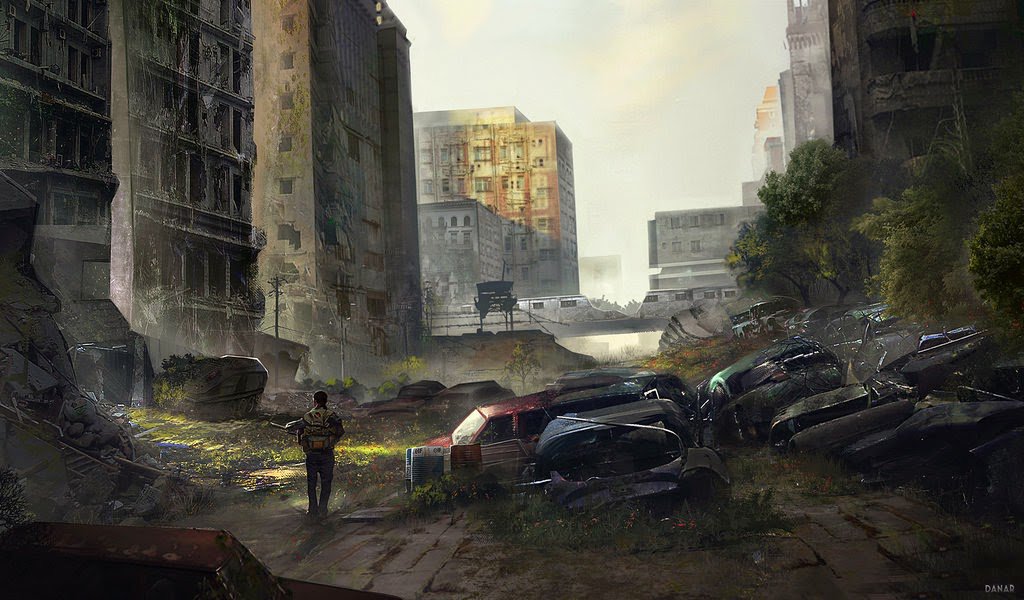
It's not "if" something bad will happen. It's "when?"
Constant pressure
As your game progresses, you need to make sure that the players have no safe spaces that they can retreat to. Moments of respite should be found further and further apart as the narrative goes on. You can ratchet up the pressure by having their previously-secured rooms be invaded while they were out, forcing them to scramble for cover somewhere else.
No-Win situations
Victory is never assured. If you give your players the choice between a bad and a worse situation it will make the results of their decision be a burden on their conscience. That degree of psychological horror can add another edge to the game to offset the monsters and screaming, mutilated civilians. Even if they do manage to take down a monster, it shouldn't just slump over dead. Have it crawl, mewling and screaming, terrified of facing its own death. Everyone can relate to that and if they see the pain and fear they are inflicting on others, it may make them question if they are really even doing the right thing. Is disabling a monster ethical? Do they throw away their morals and their humanity in the interest of survival? It may be a more subtle method of horror but it certainly is unsettling for the players to let them have a moment of introspection and see that their actions made them into the monsters they so feared to begin with.
Scarcity
There isn't enough food. There's not enough medicine. We can't save every civilian, there just isn't room in the shelter. There's no way that five bullets is enough to put down the zombie horde. There may never be enough bullets. Surplus is safety and we don't want the players to ever feel completely safe. Make them bleed for every piece of comfort they want to scrape together.
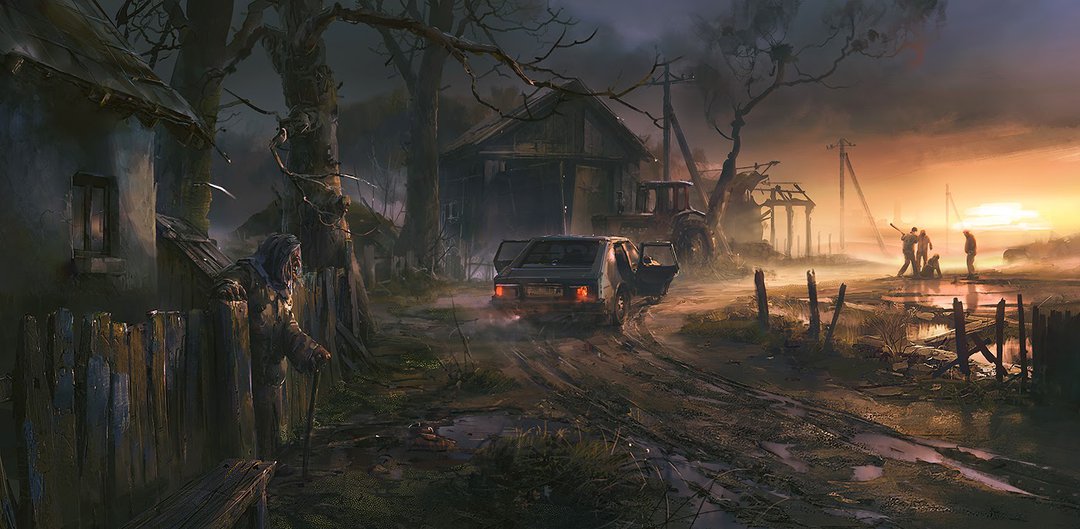
"We don't take kindly to your kind 'round here"
Out of game effects
Immersion is key to selling horror. Creepy music is really handy for setting the mood, although I rarely use it myself. I prefer to play in the semi darkness because it's easier to turn off lights than craft a subtle and compelling soundtrack. My Lovecraftian horror game was ran in a big empty classroom on my college campus so we were sitting in a dark empty void, huddled around a single lamp that I brought. I placed my back to the wall so that the players had to leave their backs exposed to the echoing space behind them. It was subtle but they picked up on it, occasionally glancing behind themselves as I described a chase scene or whispered about lurking threats in darkness.
Stay away from cliches
Going back to the Hitchcock quote from earlier I have to warn you to be careful about using outright gore. Viscera and guts are gross and scary, but it loses its punch when you see gallons and gallons of blood. It's only scary because it reveals to limits of humans and strips away any social concepts of strength. We are just meat wrapped around fragile bone, prone to leaking and failure. If you piled up corpses too high they will eventually lose that meaning. Gore should be the icing on the horror cake, used as a signal that something eerie is going on, but not be the scare in and of itself. If you find yourself using jump scares and quick gouts of blood to scare your players then you should stop and come back when you've written something better.
Less is more
Remember, the implication of weirdness can be scarier than straight up showing the weirdness itself. Seeing a small spattering of blood on the floor along with a pile of coins prompts the players to ask "what kind of thief steals the corpse and leaves the gold?" That works much better than showing the butcher monster carrying a wheelbarrow full of dozens of corpses. If they can see the threats that means that they can contextualize it into information that they can deal with. Save those revelations for the end game.
I wish you the best of luck weaving a tale of horror and woe. It's an entirely different beast from your normal roleplaying game, and it lets us explore parts of ourselves that we don't often get to see. I'd like to think that everyone should scare themselves shitless once in a while. It helps keep everything else in perspective.
If you like my articles, comment below, let's talk about it! Follow me @DKjolner, I'll tell you jokes.
- The Uncanny Valley, where things are almost human, but not quite human enough. The human brain is wired to identify faces so when things aren't all in the right spots it hits us right in the instincts.http://en.wikipedia.org/wiki/Uncanny_valley
- If you'd like an example of this kind of horror, then I suggest reading Pickman's Model, by H.P. Lovecraft. It's one of my favorites. http://www.dagonbytes.com/thelibrary/lovecraft/pickmansmodel.htm
- Just some other suspense flicks you might enjoy, in no particular order: Pontypool, Silence of the Lambs, REC, Noroi, Kairo,